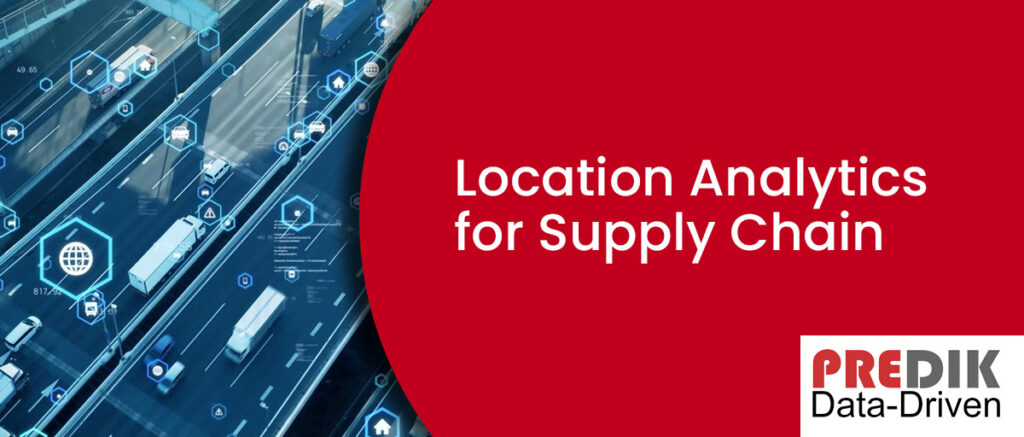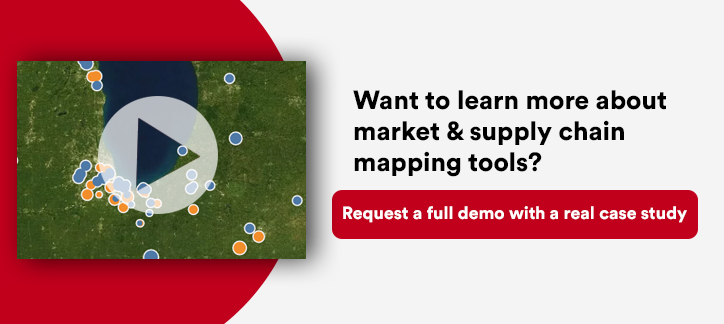Location analytics and location intelligence are two of the most powerful tools for businesses looking to optimize their supply chain operations. Logistics managers need to implement location intelligence in global supply chains to:
- Reduce delays
- Keep costs down
- Generate a competitive advantage
- Improve the global network of multiple carriers, service providers and physical locations from the constant threat of unexpected problems.
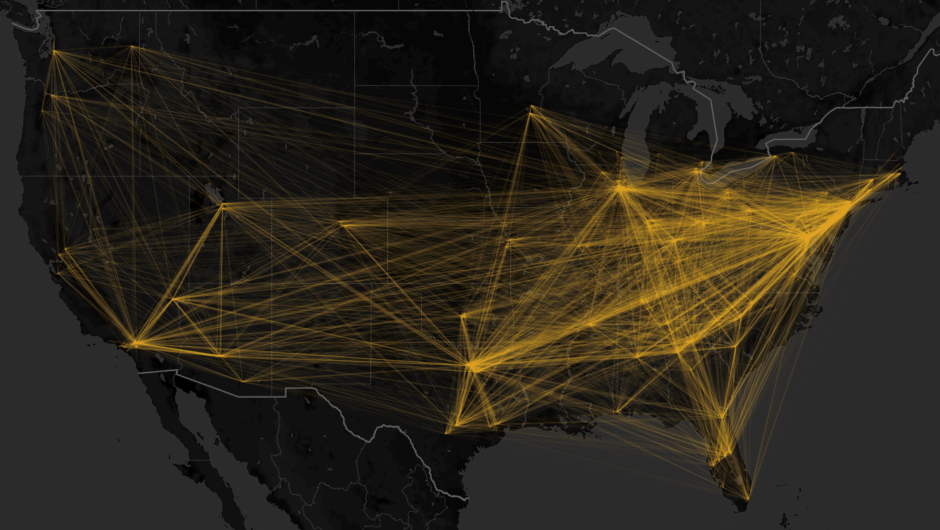
But how do these tools help improve supply chain management? How can some companies deliver products to customers so quickly and efficiently? The answer lies in the use of location analytics and location intelligence. Both tools allow companies to analyze data, make informed decisions, and improve their operations.
In this article we will explore the benefits of location analytics and location intelligence for supply chain management and business intelligence.
What is Supply Chain Intelligence?
First, we need to understand the concept of “Supply Chain Intelligence”. Supply chain intelligence involves using business data, intelligence tools, location intelligence softwares, and analytics. Its main objective is to optimize the flow of goods, services, and information.
Supply Chain Intelligence requires collecting and analyzing data from different sources, such as:
- Sales reports.
- Customer interactions.
- Transportation data.
- Manufacturing information.
You may also like to read: What is Supply Chain Visibility, and Why is It Important?
Location Intelligence and Supply Chain Intelligence: How do they work together?
Location intelligence is a subset of supply chain intelligence. It involves using geospatial data to gain insights into the market and inform business decisions. This data includes demographics, real estate information, and geographic data.
“Location analytics is the process or the ability to gain insight from the location or geographic component of business data.”
Techopedia
You may also like to read: How Does Location Intelligence Work & Why Do You Need It?
By combining these data sources, companies can understand market trends, consumer patterns, and competition activity. Location intelligence offers several benefits, including:
- Improved market insight
- Better inventory management
- Supply chain visibility
- Data-driven decision-making
The role of Location Analytics in Supply Chain Management
Location analytics analyzes and visualizes geographic and location-based data in order to gain valuable insights and improve business strategies.
The data that “feeds” Location Analytics can come from different sources, including GPS devices, mobile devices, and location-based services. Managers can fully understand their market by combining all this data with other business information (Like sales and demographic data).
Question: How certain companies know the optimal location for their new stores or distribution centers? Well, Location Analytics plays a critical role in this process. It provides businesses with the necessary data to make informed decisions.
For example, a B2C company can determine the best location for its new store. Through location analytics, companies can:
- Better locate their customers
- Understand their purchase habits
- Analyze their most popular products, services, or stores in a given area.
All these insights helps decision-makers with their store location strategies, product selection, and marketing strategies.
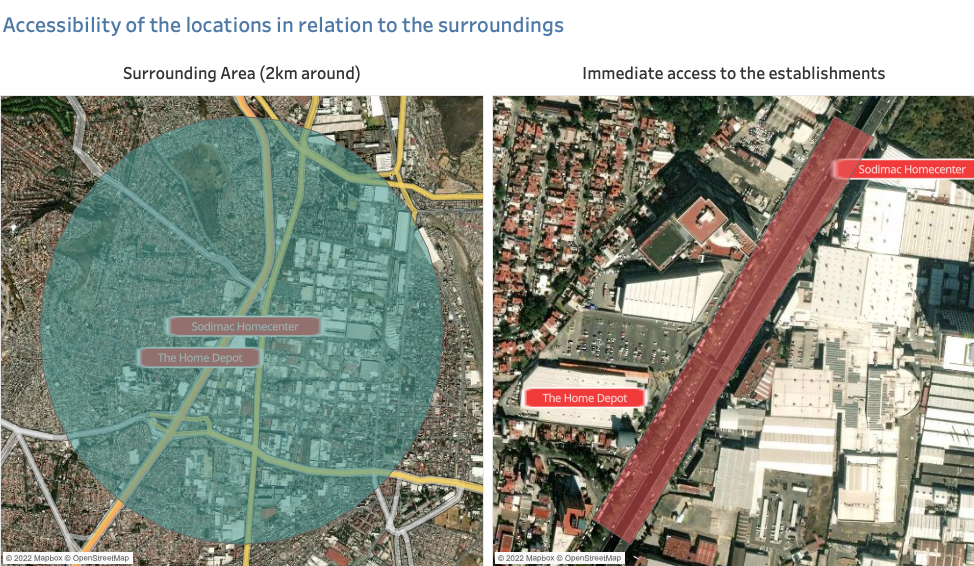
In addition, Location Analytics improves supply chain operations. How? Companies can optimize delivery routes, reduce response times, and improve logistics efficiency. These are some other aspects Location Analytics can optimize:
- Route planning.
- Delivery times.
- Inventory management.
- Identification of the optimal locations.
You may also like to read: Location analytics to Optimize Distribution Routes
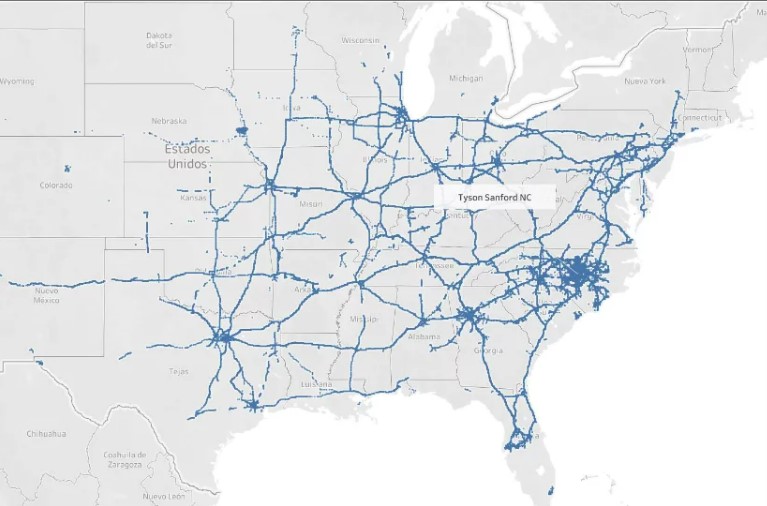
What about Machine Learning and AI?
Location intelligence leverages artificial intelligence and machine learning to analyze and predict market trends, consumer behavior, and supply chain disruptions.
Artificial Intelligence (AI) plays an important role in Location Analytics. Through Machine Learning algorithms and Predictive Analytics, AI can deliver valuable insights from location data.
Another question: How can businesses analyze large amounts of data and make accurate predictions? This is where AI comes into play. Artificial Intelligence is able to process large amounts of data in real time and provide accurate predictions.
For example, AI can predict consumer behavior patterns and identify potential supply chain disruptions. Also, AI can optimize delivery routes reducing delivery times.
Using AI, logistics companies can analyze data from GPS devices and mobiles to develop an efficient route plan. This saves time, reduces costs, and leads to faster delivery times (Improving brand experience). In addition, AI can improve supply chain visibility. Through data analysis from multiple sources, AI can provide 360 vision of all the supply chain operation.
Last but not least, AI can help companies identify potential problems before they become critical. This allows managers to proactively address supply chain disruptions and minimize their impact on operations.
Do not forget about Geospatial Data
Geospatial data plays a crucial role in location analytics. It provides businesses with valuable insights into the geographic distribution of their customers, suppliers, and operations.
Adding geospatial data into their analysis, businesses can better understand the relationships between their data points and their operations’ geography.
What will be the impact of a location for my business? Geospatial data can give you a clue by doing data visualization. This simplyfies the correct identification of patterns, trends, and relationships you may have missed.
Geospatial Data for a Retail Company (Example)
A retail company can use geospatial data to analyze the geographic distribution of its customers. By mapping customer data points, the company can identify areas with high concentrations of customers. This allows marketers focus their efforts on those areas.
The result? This process saves time and resources and increases the chances of success.
Conclusions
Location analytics is a powerful tool for businesses seeking insights and making informed decisions. Whether you are looking to expand your business or improve your supply chain operations, location analytics can provide the necessary data.
At PREDIK Data-Driven we generate solutions based on Big Data to help our customers solve delivery and picking problems, in distribution and last mile processes.

